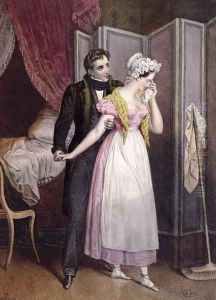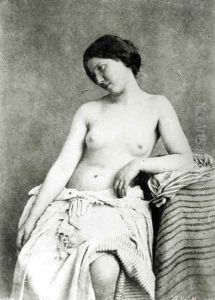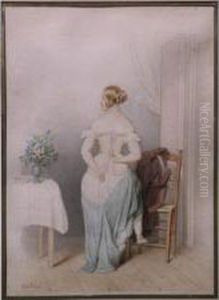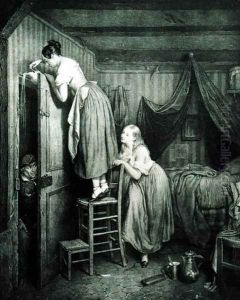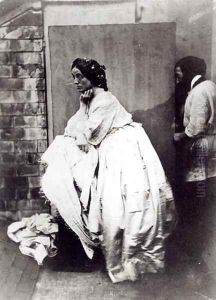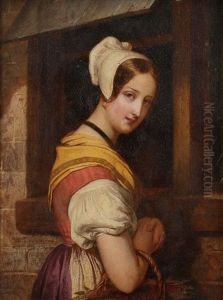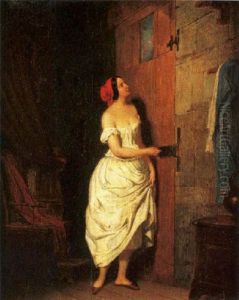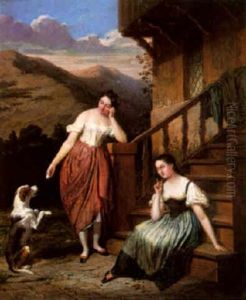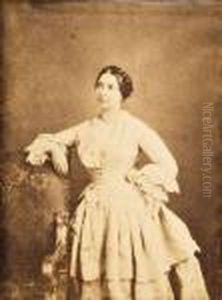Julien Vallou de Villeneuve Paintings
Julien Vallou de Villeneuve was a French photographer and lithographer, born in 1795 in Boissy-Saint-Léger, France. Before embarking on his career in photography, Vallou de Villeneuve established himself as a lithographer, illustrating works for prominent writers and artists of the time. His transition into photography marked a significant shift in his artistic trajectory, positioning him as a pioneer in the burgeoning field of photographic art in France during the 19th century.
Vallou de Villeneuve's photographic work is notable for its diverse subject matter, ranging from portraits to still lifes, and including one of his most recognized contributions to the medium: erotic photography. His images often explored themes of femininity and the human form, capturing the beauty and sensuality of his subjects with a candidness that was ahead of his time. This body of work not only demonstrates Vallou de Villeneuve's technical skill and artistic sensitivity but also provides a window into the social and cultural attitudes of his era.
In addition to his erotic and portrait photography, Vallou de Villeneuve was also known for his involvement in the early development of photographic reproduction processes. He was among the first to experiment with and apply lithography in conjunction with photography, a technique that allowed for the mass production of images. This innovation played a crucial role in the democratization of photography, making it more accessible to the public and facilitating the spread of photographic images throughout society.
Vallou de Villeneuve's contributions to photography and lithography were recognized during his lifetime, and his work continues to be celebrated for its artistic and historical significance. He passed away in 1866, leaving behind a legacy that has influenced generations of photographers and artists. Through his pioneering efforts and creative vision, Vallou de Villeneuve played a key role in establishing photography as a respected and influential form of artistic expression in the 19th century.
